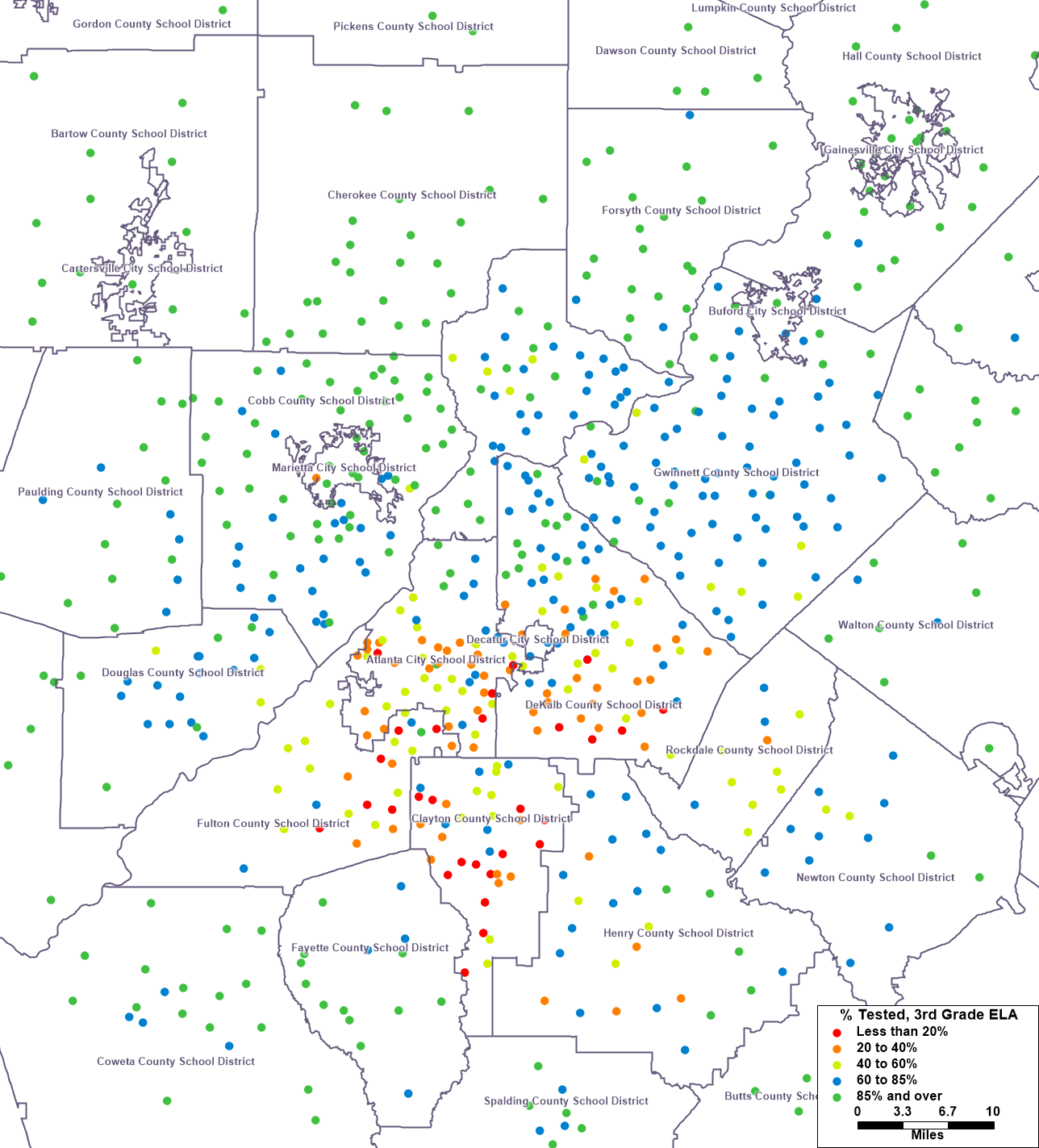In an earlier blog post , we noted that students lacking access to computers or Internet subscriptions would likely show the most learning loss during the pandemic. With the 2022 Georgia Milestones testing season getting underway at many metro school systems, it is worth taking a look at last year’s data to understand why this year’s data will be so important.
As background, the Georgia Milestones assessments have been in place since the 2014-15 school year. They replaced the Criterion-Referenced Competency Tests (CRCT), which were entirely multiple-choice, with tests that include open-ended questions. The Milestones exams (and previously the CRCT tests) are administered, in part, to meet Federal requirements, initially those of the No Child Left Behind Act and now under its replacement, the Every Student Succeeds Act. The Milestones were not administered in 2020 when schools closed due to the pandemic, but returned in 2021. However, there was no online version of these tests in 2021, and as such the 2021 Milestones were administered only to students who came in to school and took them in person. As a result, turnout was much lower than normal. For example, 79% of 3rd graders in Georgia public schools took the ELA Milestones, well below the 85% target that schools and districts are normally expected to meet. And the turnout percentages went down for older students. Only 61% of enrolled 8th graders statewide took the ELA exam. There are quite a lot of variations school-to-school as well. Figure 1 below shows participation rates in the 2021 3rd grade ELA test by school, focusing on the 11-county ARC region and its immediate surroundings.
Figure 1: Milestones Test Results for 2021: ARC 11-County and Surrounding Area(s)

As the map shows, there is a clear spatial split in terms of turnout. Nearly every elementary school in the northern tier of suburbs (Bartow, Cherokee, Forsyth, and Hall) had 85% or better participation on the 3rd grade ELA, with similar participation rates in most Coweta and Fayette schools. There was much lower 2021 turnout in the Atlanta Public Schools, the DeKalb County School District (especially South DeKalb), and in Clayton County schools. For example, about half of Clayton County elementary schools had less than 30% of enrolled students participating. As a county with a higher proportion of COVID-19 at-risk populations, Clayton County schools was one of the last systems to return to in-person instruction. And the story in Clayton is reflective of the overall trend: the lowest turnout occurred in areas with populations at greater risk for severe COVID symptoms.
But this also means that areas we suspect to be of greatest risk of learning loss are also the areas where we have the least reliable data. The correlation at the school level between percent turnout for the 3rd grade ELA test and percent of students who are “directly certified” (the poverty measure calculated by the Governor’s Office of Student Achievement) is -.37 statewide and -.67 among the fifteen systems serving the ARC region. So in general– the higher the poverty level, the lower the participation. The data do appear to constitute more a proxy for how much a school or system had returned to “normal” instruction this time last year than an indication or reflection of the school or system’s overall performance. Both governmental and nonprofit entities concerned with education are counting on better turnout this testing cycle in order to inform where best to invest in interventions to ameliorate the impact of the pandemic.

